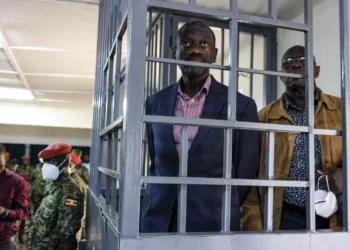The Banco Nacional de Angola (BNA) will lower its policy rate by 50 basis points to 15.0% by year end-2021, Fitch Solutions predicts.
The Banco Nacional de Angola maintained its policy rate for the twelfth consecutive time, since the bank last cut the policy rate in May 2019. This was affirmed in the March 2021 monetary policy meeting of the bank.
The MPC noted persistent inflationary pressures, and decided to increase the interest rate from 7.0% to 12.0%. Although, the foreign exchange market observed some stability.
This notwithstanding, Fitch expects that the slowdown in inflationary pressures over the coming quarters will allow the central bank some space to cut the policy rate in the second half of 2021 to support the country’s recovery process.
In 2020, the Kwanza lost 25.9% of its value to the dollar; due to the global risk sentiments associated with the COVID-19 pandemic, which increased import costs and reduced oil exports. This further accelerated inflation from 18% year-on-year in January 2020 to 25.1% in December 2020.
In January 2021, however, price growth slowed for the first time in 15 months. Albeit, rising food prices reduced the impact of the strengthening currency. Thus, resulting in sustained high levels of inflation in January and February 2021.
Fitch Solutions hints that this turn of events has prompted the revision of their annual inflation forecast from 18.0% to 19.7%. However, the easing exchange rate pressures will lessen inflationary pressures over the next couple of months, Fitch Solutions assert.
Weak economic conditions persist
Angola’s real GDP growth will grow by 1.7%, after five years of recession. The upward trend in GDP will be driven by an uptick in oil exports, although domestic demand will remain weak.
Furthermore, pressures from relatively high inflation and unemployment will continue to have a toll on purchasing power. High costs of doing business will also affect a rebound in private investment.
Against this backdrop, a combination of these outcomes will cause the bank to lower interest rates amid slower inflation outlook. Thus, reducing the already high borrowing costs, Fitch Solutions believes.
Inflation will further slow down to 14.2% in 2022. This is as a result of ease in the pressure on the Kwanza and base effects emanating from the changes in the value-added tax regime decline drastically. Also, Fitch expects real GDP growth will rise further to 3.1% in 2022.
At year-end 2021, the policy rate will still be 600bps higher than it was before the tightening policy regime. Fitch believes that the Banco Nacional de Angola will have some space to further lower the policy rate to support lending activity and the economy’s recovery.
Fitch notes that although short term interest rate is likely to decline by 50bps, the Central Bank will adopt a more cautious approach to monetary easing.
Thus, Fitch flags significant upside risks in the Bank’s solid commitment to control inflation as part of Angola’s IMF financial programme.
However, in the case where inflation slows less sharply than anticipated, the central bank would likely wait until greater price stability is achieved. This would mean that the bank would refrain from implementing any interest rate cuts in 2021.
READ ALSO: Projected 5% GDP growth may not materialize if power issues are not resolved- Dr. Said





















